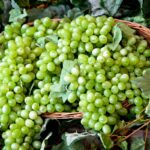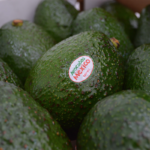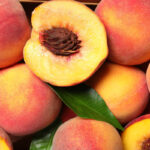Kantar spells out potential for real produce gains at U.K. retail

From the pages of Produce Business UK
Despite inflation in the grocery market, the UK is more engaged with fresh produce than ever before, according to the latest grocery market data from Kantar Worldpanel, presented by Strategic Insight Director Ed Griffiths.
Here, PBUK reports on the opportunities for the fresh produce trade to tap into dish diversity, talk about health, market fruit for function, retail veg for convenience, promote dishes over meals and price produce to win by considering economy ranges and achieving premiums through health.
In 2018, shoppers made 109 trips featuring produce to UK supermarkets, a figure that has risen from 101 trips in 2014 (equating to eight more trips in an average year), according to Kantar Worldpanelwhich tracks 30,000 UK households.
“This is well ahead of growth at a total grocery level, which has only five more trips,” Griffiths explained. “Produce is even more important to the grocery market – it's a real powerhouse.”
As well as buying produce more often, volume and repertoire diversity is up too, according to Kantar. The average UK household bought 50 different produce items in 2018, against 46 items in 2014.
Tap into dish diversity
Kantar determines that the UK’s more diverse dinner plate undoubtedly has been driven by growth in the eating-out-of-the-home market, which has helped to expand shopper repertoires in store.
This is where offers such as Lidl’s ‘Pick of the Week’ and Aldi’s ‘Super 6’ are resonating with shoppers in particular, with nine items being bought on average per trip to Aldi, compared with seven items at Tesco.
“People are emulating their experiences outside of the home,” Griffiths said. “There’s been an explosion of meal kits and food kits. The nice thing is that they all need fresh fruits, veg and meat.
“We are seeing growth away from classic British occasions like roasts [plus casseroles, soups and sausages], which are down year-on-year,” pointed out Griffiths.
“Asian food is up quite substantially ... and these cuisines use different ingredients. Pak choi, etc. has become more prominent. Keep in mind a more diverse dinner plate.”
Talk about health
Health is another reason why the UK is more engaged with produce, and, therefore, an important message to communicate.
“Health is a growing factor amongst consumers in the UK, with 31% of all meal occasions being consumed for reasons relating to health,” Griffiths pinpointed.
“With produce a poster child for many campaigns it’s no surprise that produce sees 71% of all consumption occasions flagged as for health.”
As such, Kantar predicts more produce occasions – driven by the inherent health credentials of fresh produce – alongside the growth of health is likely to continue into the future.
“If your product is healthy ... positive press and campaigns can have a significant impact on your category,” Griffiths suggested.
Kantar data finds that other fundamental reasons for eating produce are:
- To achieve a portion of fruit/veg (representing 29% of consumption occasions);
- Because produce is more natural/less processed (15%) and;
- Because produce is lower in fat, sugar, salt (12%).
Market fruit for function
Together with purchasing growth, Kantar reveals that the UK is eating fruit and veg on more occasions than five years ago.
During the 52 weeks ended August 2018, against August 2014, the number of meal occasions featuring fruit rose by 8%, while vegetable consumption occasions grew by 3%.
Currently, breakfast is the key to fruit consumption – led by berries and bananas, and especially with cereals (+28% vs 2014) and yoghurt (+39%) – versus desserts, where fruit consumption has fallen.
“Breakfast is the driving force behind the rise in fruit consumption,” explained Griffiths. “80% of the category growth is coming at the breakfast occasion. This is an additional 550 million occasions over five years.
“Meanwhile, fruit is losing its place at our main meals. We are now less likely to be eating fruit at lunch and in evening meals.
“We have eaten 820m fewer desserts compared with five years ago; really that’s because we’re getting our health needs at the start of the day.”
As for the reasons why the UK is choosing to eat more fruit, Kantar data finds they include.
- To get a portion of fruit or veg
- To enjoy the taste
- For health benefits
- It’s lighter/not filling
- It’s refreshing.
“Great taste and health benefits are becoming more significant to our choice of fruit,” Griffiths explained. “Refreshing and being lighter are also growing needs. Fruit is ticking more needs.”
Bearing this in mind, Griffiths urged avoiding 5-A-Day messaging when it comes to fruit. “Instead, I’d move towards getting across these types of occasions [for eating fruit], the functions of fruit and how they can help you to lead healthy lifestyles.”
As for the winning and losing consumer groups, the over-65s and the Millennials represent the two ends of the spectrum, according to Kantar data.
“The over-65s are the only consumer group consuming fruit less frequently than five years ago,” Griffiths stated. “They account for nearly 30% of all fruit occasions, so how do we re-engage these consumers?”
Millennials, meanwhile, account for more than half the additional fruit occasions over past five years. “They are the only consumers eating more fruit at every meal time – across breakfast, lunch and evening meals,” Griffiths added.

Retail veg for convenience
When it comes to vegetable consumption, salads are the key driver because they are helping consumers to tick the lifestyle boxes for health and convenience.
“Salads have done incredibly well, and so have other veg over the past five years, whilst potato consumption is falling,” Griffiths explained.
“People are spending less time on preparing evening meals; they are less inclined to cook and more inclined to make a salad. Salads are healthy too.”
Kantar data indicates that salads are winning with the young, and women and men of all age groups.
“It’s a go-to healthy meal; it’s ideal for lunch boxes – salad meals are twice as likely to feature in carried-out lunches than other foods – salads are considered to be convenient,” Griffiths added.
“Consumers need things to be practical, quick and enjoyable. If you can meet more needs for consumers, they will pay more.”
On that note, Griffiths advised that health is the need for which UK consumers will pay the most. In 2016, the UK paid 5% more for healthy products versus standard; rising to 7% in 2017 and up to 9% in 2018.
Promote dishes over meals
More generally on the consumption front, Kantar claims the UK is eating ‘dishes’ rather than meals.
“Consumers are talking about dishes,” Griffiths revealed. “They are looking for solutions, and that is the language that we should be talking to them with. Talk abut dishes and not meals.”
In the past few years, Kantar data demonstrates an uptick in dishes including:
- Salads;
- Toast meals;
- Oriental food (including Thai) and;
- Pizza.
Conversely, those in decline are:
- Roast dinners;
- Indian food;
- Steak meals and;
- Baked potato meals, among others.
Across the UK, Italian food, salads and vegetarian dishes are also growing in popularity. Bearing that in mind, Griffiths advised the produce trade to align its products with these meal occasions.
For instance, avocados – which Kantar data ranks as the fastest-growing produce item of all, have successfully expanded into new dishes and meal occasions.
“Avocados are growing through all meal occasions,” he said. “Avocados used to be all about salads, but now they feature in breakfast and dinner.”
Other produce items gaining in the number of meal occasions are: ginger, kale, spinach, berries and currants, plus garlic, according to Kantar.
Price produce to win
When it comes to pricing fruit and vegetables, Kantar data indicates that the UK market is all about value and premium ranges.
“In the past 18 months throughout grocery at a total store level, private-label tiers are driving growth,” Griffiths stated. “Brands are finding it hard.”
Fresh produce is experiencing very similar trends, according to Kantar. Economy and premium are driving growth in produce; with economy (+24%) and premium (+5%) outperforming standard (+1%).
So, what are the driving forces?
Consider economy ranges
Economy tier products at retail were worth £676m in sales during the latest year, up £128 million, according to Kantar.
“It’s all about new shoppers,” Griffiths clarified. “Nearly 1 million households (955,000) have bought into economy ranges in the latest year, and it’s not just a one-off. The people who are buying it are already buying it more often (worth an additional £86m). It’s a double whammy.”
Largely, this is related to the farm brand labels launched by Tesco and Asda, according to Griffiths.
“The two occasions that Tesco and Asda managed to stop losing market share in the last five years are when they launched their value propositions; Tesco’s ‘farm brands’ and Asda’s ‘farm store ranges’,” he explained.
“In both instances their market losses to the discounters did reduce. It’s probably the reason we saw the launch of [Tesco’s] Jack’s. If that works, you can bet they’ll roll it out.”
Griffiths added that ‘wonky produce’ also sits within the value range, describing the offer as having done “quite well for itself.”
Since its introduction two years ago, Kantar data finds that wonky fruit and veg captured 7.7 million households during 2018, up from 1.7m in 2016. In terms of retailers, Morrisons is the leading the way.
“There’s a very strong repeat [purchasing] rate,” noted Griffiths. “It might be resonating with consumer groups, and not be the fad we thought.”
Achieve premiums through health
At the other end of the scale, Kantar data shows premium produce accounted for £782 million in sales during the latest year, up £38m.
There were 538,000 new shoppers in premium produce, who were buying more often (worth +£25m). Lidl posted the strongest growth among the retailers.
“Premium is a great thing for the produce industry,” Griffiths enthused. “You should all be mindful of it, and definitely consider it.
“People are already shopping more, so it’s unlikely we’ll get many more trips in the short term.
The other avenue for growth is price. But if put prices go up, we’re unlikely to get growth. ‘Premiumisation’ is a way to get higher prices.
“Premium offerings can help justify price premiums that consumers might not otherwise accept – 81% of the growth driven by premium in the past year was incremental to the market.”
As for choosing the right messaging for premium-branded produce, Griffiths suggested tapping into the health trend, considering that consumer sentiment continues to shift toward health as a driver for produce consumption.
“Economy ranges are consumed for more practical reasons,” he said. “Premium is more likely to be consumed for health.
“People will pay more for health. If you can get a premium message across, as well as a healthy message, I think you’re probably onto a winner.”














































